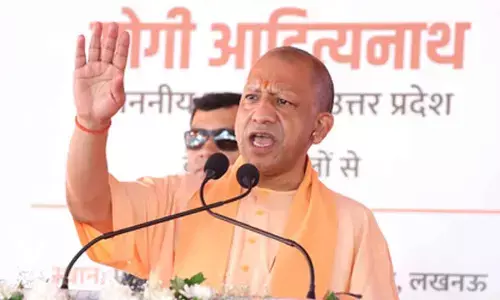Lac: A Hidden Gem that could boost economy

Does anyone remember how we discovered oil? It’s very hard to imagine a world without this black gold with just about every industry being critically dependent on it.
Does anyone remember how we discovered oil? It's very hard to imagine a world without this black gold with just about every industry being critically dependent on it. People had been using the black liquid for over a thousand years to not just light lamps but also as a lubricant for household purposes. But it was not until someone used it to set off the motor industry that it became such a vital aspect for just about everything.We often neglect things that are right in front of us and continue to search for other solutions to a problem that affects us. Lac is one such substance that India has forgotten about and could be a way to boost the economy.
What is Lac and how is it formed?
Lac is the scarlet resinous secretion of a number of species of lac insects which has found manifold use in everyday life. In fact, it is one of those substances that has had a long history in India and has been the source of livelihood for several thousands of people, both directly and indirectly.
Kerria lacca is essentially the scale insect which is the main source of lac. Soon after hatching, the wingless bug sinks its beak into a tender new twig and begins sucking. After that, it barely moves. It sucks up sap at one end, and secretes lac, a scabby resinous goo, out the other end. The lac hardens into an amber-coloured deposit on the twig when it encounters air. Eventually, the whole bug is encapsulated in lac, creating a sort of cocoon in which it lays its eggs and begins the cycle anew.
For millennia, the forest tribals in India have been harvesting lac resin to produce shellac, a finish used on fine wood furniture. The lac encrusted twigs are collected and sold as "sticklac." After the lac is scraped off and most of the impurities filtered out, the resin is sold again as "seedlac". Seedlac can be melted down or mixed with solvents or other ingredients to create varnishes, cosmetics and perfumes which are just some of the by-products.
Why is Lac cultivation beneficial?
Lac cultivation is beneficial for a variety of reasons, including it's a good source of livelihood for poor farmers as it requires meagre inputs (like water, pesticides etc), is most suitably grown on marginal and degraded land and poses no competition with other horticultural and agricultural crops for land and farm operation.
It is used to make bangles, toys, inks and polishes and is also used in the electrical and pharmaceutical industries. Not many people know but lac is also used to make capsules of tablets which is why it is one of the largest exported products from India. India is the largest producer of lac in the world and contributes to about 75% of the world's need. However, there is currently a gap of 21% between demand and supply, therefore a great market potential. Countries like Thailand, Malaysia and China have sped up their production of the substance in the past decade and this is where we have slowed down. In 2014, India produced 20,000 tons of lac whereas our capability is for 5x more.
The way forward
The government needs to extend support for increasing lac production in the country. As of now, lac hasn't been categorised under one ministry and so it has become difficult to approach government officials for help on the issue. India's climate and environment allows for large scale production of the resin but there are middlemen who indulge in corrupt practices which leads to a loss for the farmers growing lac. The government needs to set up a minimum selling price for the product and focus on developing lac-based industries in India, for example – extend support for making tablet capsules in the pharmaceutical industry which would enable more growth and profits to the country's GDP.
The writer is secretary, Tapsil Jati Adibashi Praktan Sainik Krishi Bikash Shilpa Kendra (TJAPSKBSK), a voluntary organisation working for the uplift of tribals














